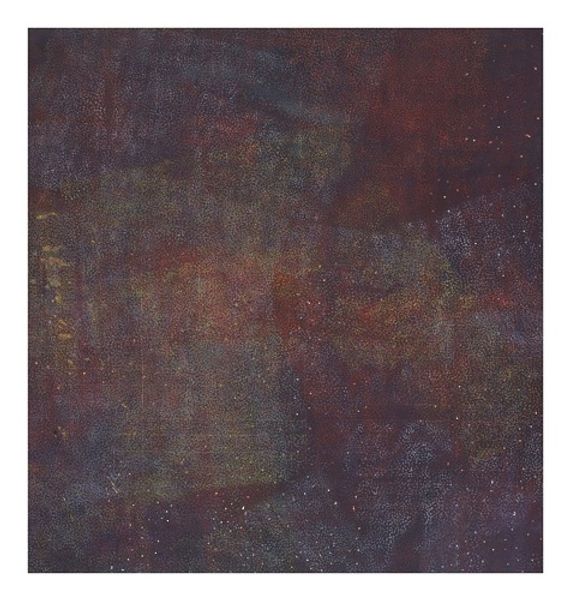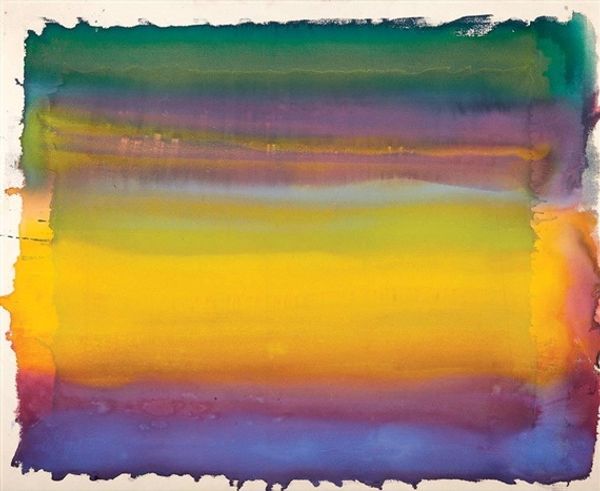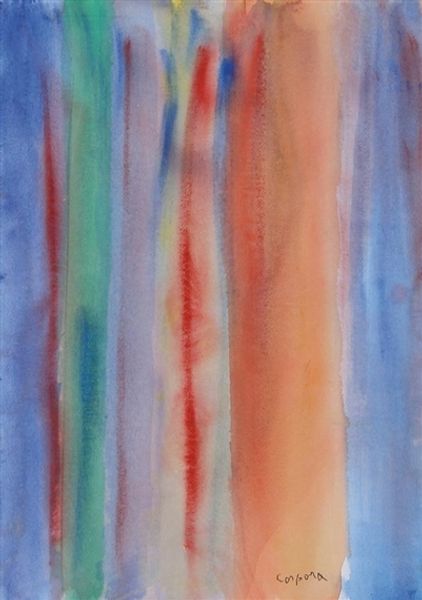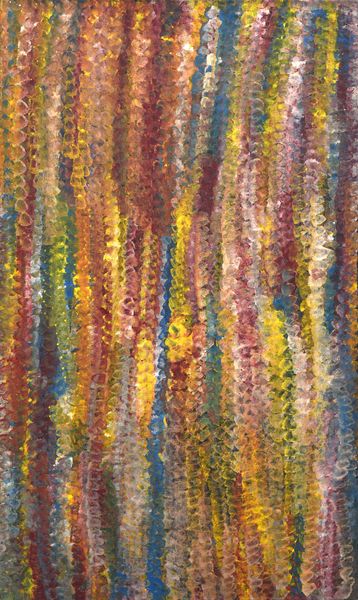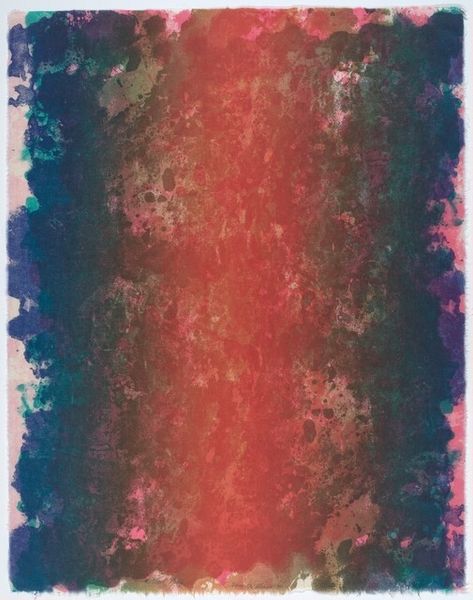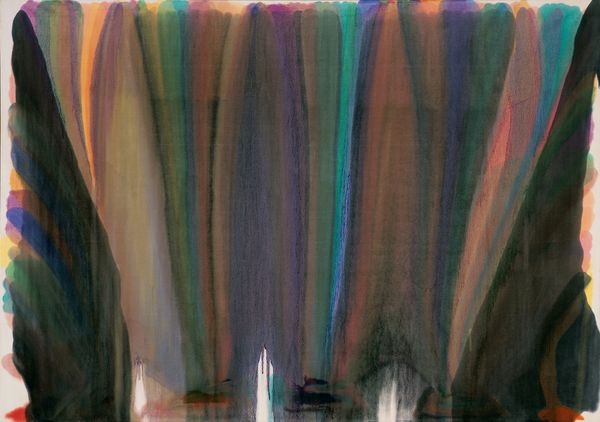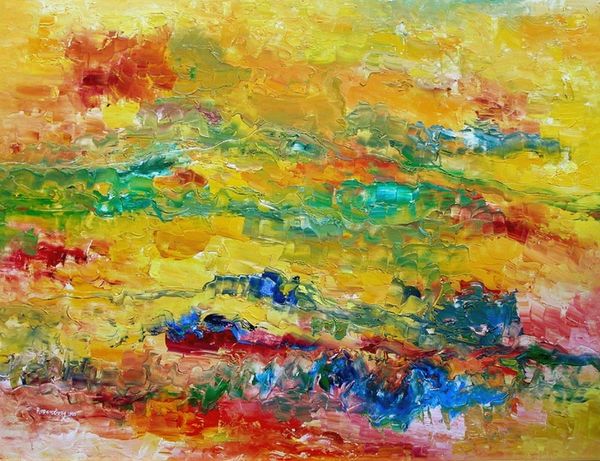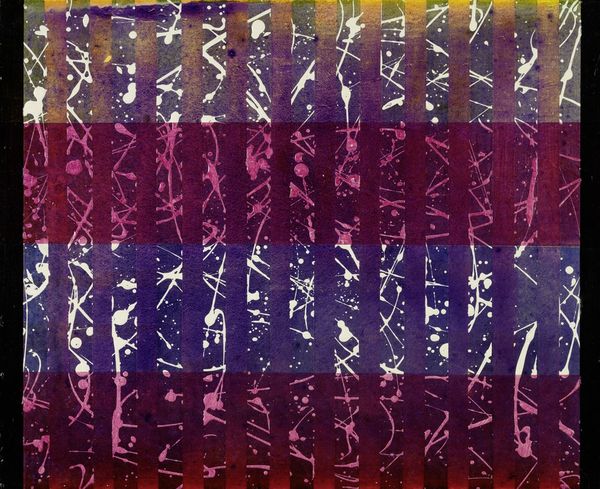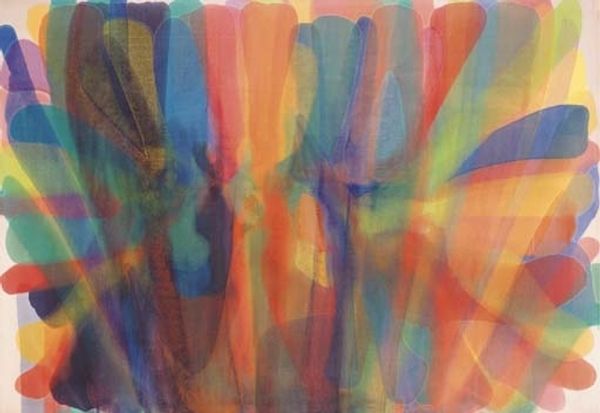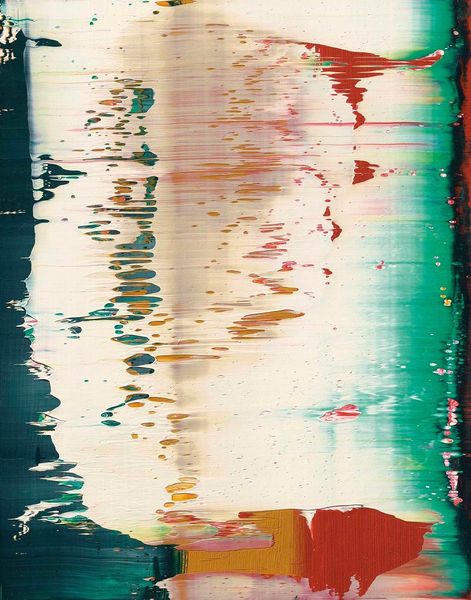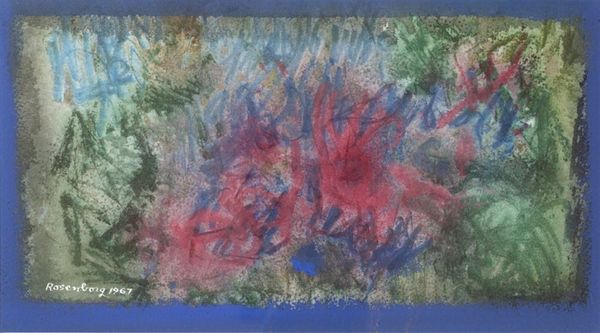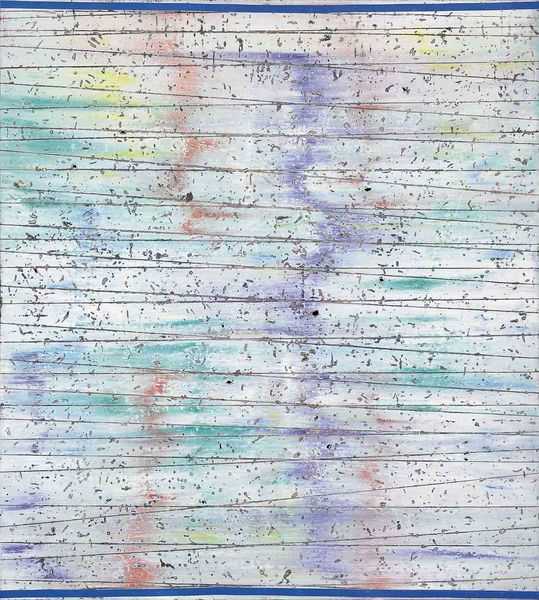
Copyright: Public domain
Curator: What a shimmering surface! I’m immediately drawn to the horizontal striations of color, almost like looking at woven threads. Editor: Indeed. Here we have Christian Rohlfs's "Sonnenuntergang am Lago Maggiore," or "Sunset on Lake Maggiore," created in 1929. The medium is oil paint, applied with noticeable impasto, creating that tangible texture you've noted. Curator: I am especially struck by the texture generated, which begs the question: what kind of labor went into applying the impasto so meticulously? Each stroke, a unit of labor; what are the working conditions or workshop culture for this production of paintings that could tell? Editor: Rohlfs, aligned with Post-Impressionism, certainly prioritized subjective experience. I mean, structurally, we see a dissolution of form; the sun and water become pulsating fields of light and color, moving toward pure abstraction. Curator: It looks like the abstraction certainly leans on a tradition of landscape painting while resisting its conventions by investigating material capacities. I wonder about the availability of paint materials in Germany at this time, and whether there were any social programs for supporting painting through the Depression, which in turn afforded new possibilities for abstract landscapes like this to emerge. Editor: Your point on material availability is intriguing. The luminosity achieved, that inner glow— it really draws the eye and makes you question where else you might find painting traditions for abstract form making such as with textile production. I am most intrigued by the light as visual vocabulary. Curator: Exactly! The way light interacts with and defines both materiality and structure, speaking to both the symbolic realm and the material conditions that made its depiction possible, reminds me a great deal about discussions I have had with master craftspeople and how similar some of the aesthetic effects are to ones achieved via skilled artisans. Editor: Perhaps we are invited to find light that refigures our conventional understanding of not just painting, but craft as well. It prompts us to contemplate a different form of aesthetics, one not reliant on realism, yet so rich. Curator: Absolutely. I can only see new possibilities and potential intersections between both that point to an entire sphere of knowledge. Editor: A truly radiant point on which to end!
Comments
No comments
Be the first to comment and join the conversation on the ultimate creative platform.
